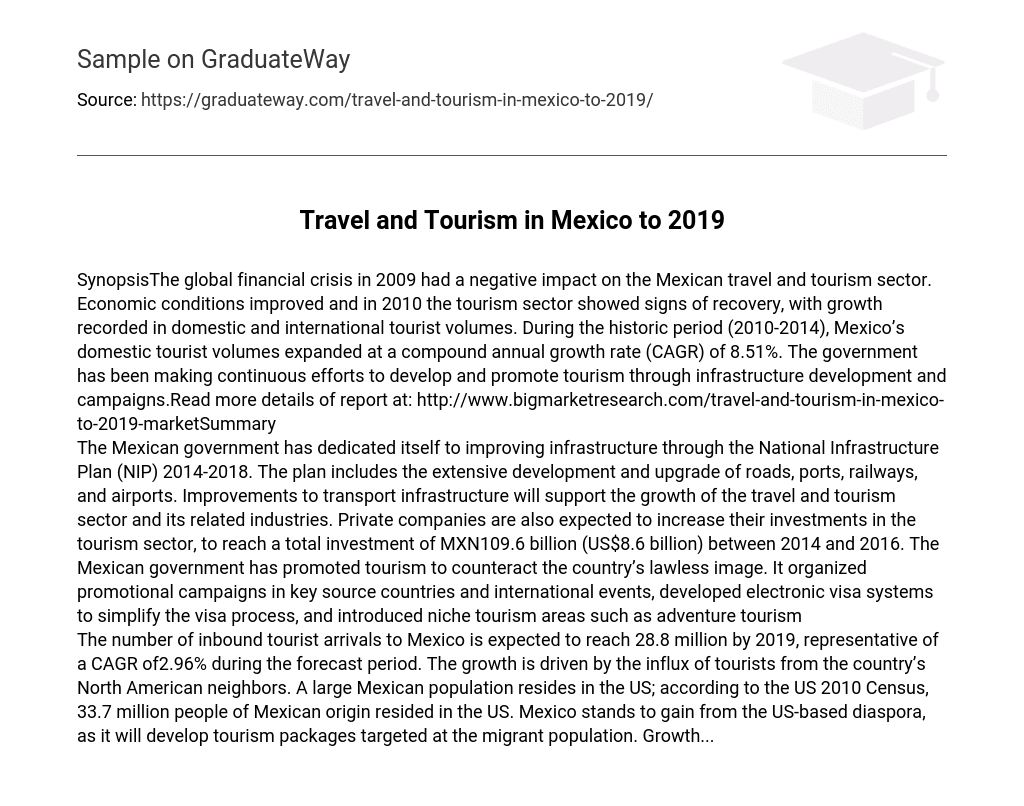SynopsisThe global financial crisis in 2009 had a negative impact on the Mexican travel and tourism sector. Economic conditions improved and in 2010 the tourism sector showed signs of recovery, with growth recorded in domestic and international tourist volumes. During the historic period (2010-2014), Mexico’s domestic tourist volumes expanded at a compound annual growth rate (CAGR) of 8.51%. The government has been making continuous efforts to develop and promote tourism through infrastructure development and campaigns.Read more details of report at. The Mexican government has dedicated itself to improving infrastructure through the National Infrastructure Plan (NIP) 2014-2018. The plan includes the extensive development and upgrade of roads, ports, railways, and airports. Improvements to transport infrastructure will support the growth of the travel and tourism sector and its related industries. Private companies are also expected to increase their investments in the tourism sector, to reach a total investment of MXN109.6 billion (US$8.6 billion) between 2014 and 2016.
The Mexican government has promoted tourism to counteract the country’s lawless image. It organized promotional campaigns in key source countries and international events, developed electronic visa systems to simplify the visa process, and introduced niche tourism areas such as adventure tourism The number of inbound tourist arrivals to Mexico is expected to reach 28.8 million by 2019, representative of a CAGR of2.96% during the forecast period. The growth is driven by the influx of tourists from the country’s North American neighbors. A large Mexican population resides in the US; according to the US 2010 Census, 33.7 million people of Mexican origin resided in the US. Mexico stands to gain from the US-based diaspora, as it will develop tourism packages targeted at the migrant population. Growth…





